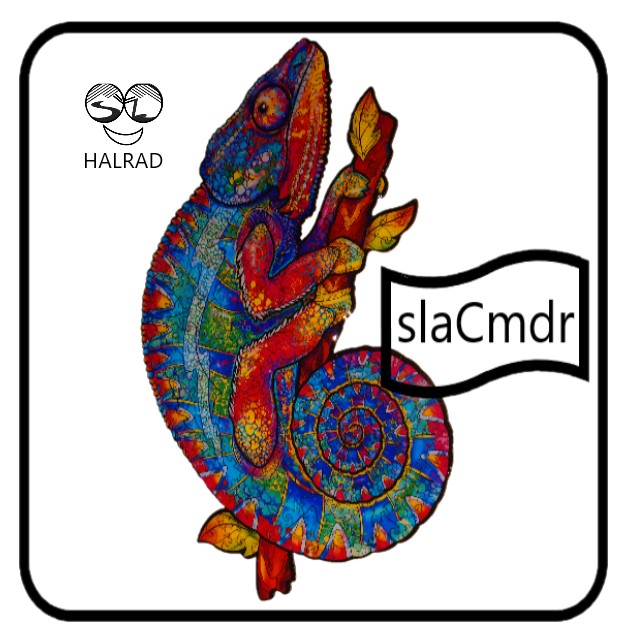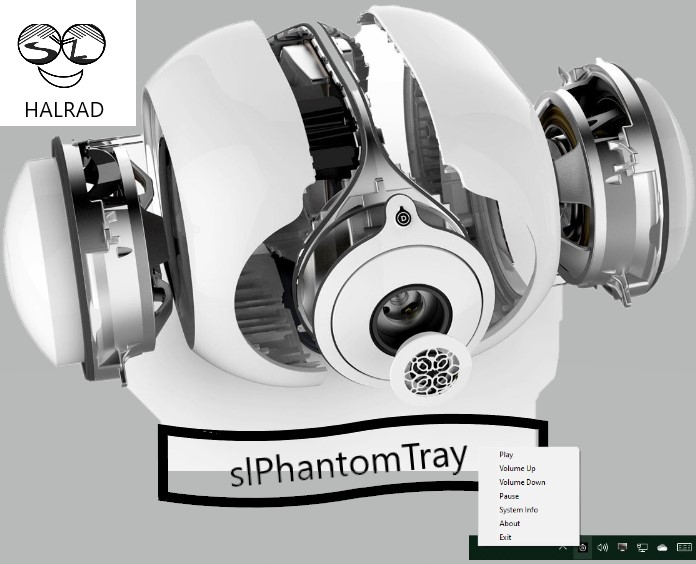
slaCmdr v2.5
Command-line automation for Phantom speakers
slaCmdr v2.5
slaCmdr - Command-line interface for Devialet Phantom speakers. Automate playback, volume control, and source management from scripts, shortcuts, or Stream Deck.
- 🗺️ Device name mapping via device_names.json
- 🎯 Play sources by index number for easier scripting
- 💻 Interactive CLI mode with command aliases
- 🔧 .NET 8 runtime for improved performance
Quick Start
- Single executable - no installation required
- Works with Windows 10/11 (.NET 8 runtime)
- Compatible with Devialet firmware 2.14+
- Create desktop shortcuts for one-click control
What is slaCmdr?
A powerful command-line tool that puts you in control of your Devialet Phantom speakers. Like a chameleon, it adapts to your automation needs - from simple desktop shortcuts to complex scripting scenarios.
🎯 Core Features
- Full CLI Control: Play, pause, volume, source selection
- Device Discovery: Automatic mDNS network scanning
- Source Management: List and switch between all available sources
- Interactive Shell: Real-time control with command aliases
- Automation Ready: Perfect for scripts and scheduled tasks
- Icon Library: Built-in icons for custom shortcuts
⚡ Perfect For
- Desktop Shortcuts: One-click play/pause/volume controls
- Stream Deck: Assign commands to physical buttons
- Home Automation: Integrate with any system that can run commands
- Touch Screens: Create simple control interfaces
- Scheduled Tasks: Automate volume changes, source switching
- Theater Software: Control audio from media applications
Download & Installation
Get slaCmdr
Latest Version: 2.5 (R25)
Download slaCmdr v2.5Single executable • Requires .NET 8.0 Runtime • Updated: 7/27/2025
Installation
- Download and extract the ZIP file
- Rename the executable if desired (e.g.,
phantom.exe) - Run from command line or create shortcuts
- .NET 8 will prompt to install if not present
Command Line Usage
Basic Syntax
Quick Examples
📝 Complete Command Reference
Discovery & Connection
-Discover- Find all Phantom devices on network-Connect [IP]- Start interactive CLI session
Playback Control
-Play- Start playback of current source-Pause- Pause current playback-VolUp- Increase volume by 5%-VolDown- Decrease volume by 5%
Source Management
-GetSourceList- List all available sources-PlaySource [ID|Index|Name]- Switch to specific source-GetNowPlaying- Get current playback information
Namespaces
devices- Control individual speakerssystems- Control stereo pairsgroups- Control multi-room groups
Desktop Shortcuts
Create one-click controls on your desktop:
🖱️ Creating Shortcuts
- Right-click on desktop → New → Shortcut
- Set target:
C:\tools\slaCmdr.exe 192.168.1.100 groups -Play - Name it "Play Phantom"
- Right-click → Properties → Change Icon
- Browse to slaCmdr.exe and select from built-in icons
- Optional: Assign a hotkey (e.g., Ctrl+Alt+P)

Interactive CLI Mode
Connect to a device for real-time control:
CLI Aliases
Use shortened commands for faster control:
pl= playpa= pausev+or+= volume upv-or-= volume downlorls= list sourcesg= get now playingps= play source
Device Name Mapping
Make your devices easier to identify with friendly names:
📁 Configuration File
slaCmdr creates device_names.json in its directory on first run. Edit this file to map device IDs to friendly names:
Now your device lists will show friendly names instead of UUIDs!
Stream Deck Integration
🎮 Elgato Stream Deck Setup
- Install "Advanced Launcher" plugin by BarRaider
- Drag Advanced Launcher to a button
- Set Application:
C:\tools\slaCmdr.exe - Set Arguments:
192.168.1.100 groups -Play - Customize button icon and label
Recommended Button Layout:
- Row 1: Play | Pause | Volume Up | Volume Down
- Row 2: Spotify | Optical | Bluetooth | AirPlay
API Reference
Devialet API Endpoints Used
- Now Playing:
GET /current/sources/current - Source List:
GET /current/sources - Play Source:
POST /current/sources/{id}/playback/play - Playback:
POST /current/sources/current/playback/{play|pause} - Volume:
POST /current/sources/current/soundControl/{volumeUp|volumeDown}
Related Applications
Troubleshooting
🔧 Common Issues
- Devices not found: Check firewall, ensure mDNS is enabled
- .NET error: Install .NET 8 Runtime from Microsoft
- Connection refused: Verify IP address and network connectivity
- Commands not working: Check namespace (devices/systems/groups)
Contact
© 2025 Halrad LLC • Command-line automation for Devialet Phantom speakers
